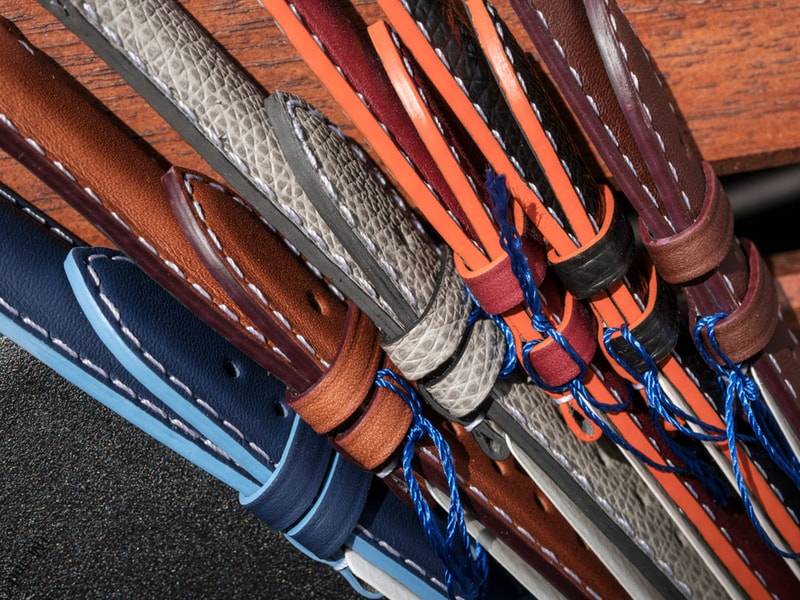
In previous installments we discussed our philosophy behind design and material choices for the ‘hard’ parts of the watch - movement, dial, case, crystals etc - but left out the soft stuff. We’re of course talking about straps. For the 17.01, we used a custom-designed buckle intended to be the best tradeoff between allowing the bottom strap-buckle portion to sit flat on the wrist without bulging or being thicker than the head; the profile of the pin was designed specifically not to crease/stress the strap too much so that it would both flow nicely through the buckle and keepers, sit flat, and help with longevity.
We’ve retained the same buckle for the 19.01 as we didn’t feel any need to change it - the 19.01’s straps follow the same specification, too, which means they interact with the buckle in the same way, and yes, straps are interchangeable between 19- and 17-series watches (should you desire plain calf on your 19.01, or something fancier on your 17.01). We’ve found in general from both our own experience and customer feedback that watch collectors fall into three camps: bracelet only (sorry, can’t help you…yet), strap with pin buckle only, or strap with deployant only. It seems that the pin-buckle-vs-deployant debate is one of the greatest controversies in watch preferences - who’d have thought?
Initially, we looked into a deployant for two reasons: my own personal preferences, and my paranoia around dropping a watch while putting it on. But after trying several options (including of course considering our own design), we found that no matter what the solution, the bottom portion of strap with deployant and two layers of leather would be thicker than the watch head - and this just looked wrong. We reverted to investigating a better pin buckle and fortunately found this gave the best balance of design and comfort (and much greater comfort than any deployant option). And on top of that, would allow us to include one with each strap rather than having to change every time you swapped straps.
As much as we were happy with the price-performance ratio of straps for the 17-series, they didn’t quite fit the philosophy of the 19.01 flagship: we would need to have the best straps, period. Still using calf though, for ethical and import reasons. Once again, several of the top manufacturers were investigated but on the basis of available hide colors, consistency and samples - we selected Jean Rousseau in Paris. We were informed, not so long ago, about some new material options, which means we have some new prototypes incoming, so I honestly cannot tell you what straps the 19.01 will ship with other than one of them will have the camel colored calf top as originally photographed and the other one will be grey.
Whilst padding suits our design language best and balances off the volume of the case, we want the straps to be supple and comfortable, too: making a strap that’s rigid laterally to avoid ‘flop’ but soft transversely for best contouring isn’t easy; it’s likely that the stiffer upper (calf) will be paired with a softer alcantara liner, and the other one - likely anthracite alcantara - will be paired with a sweat-resistant rubber liner. Our philosophy is that if our straps survive outdoors in the tropics…they will probably survive anywhere.
Both straps - and all future straps - will utilize contrast elements in stitching, edging and liners to ensure the strap has just as much visual impact as the watch head. For instance, you’ll notice we almost always use white contrast stitching; this is for visual continuity with the other white detailing elements used on the dial (i.e. the luminous bits). As our watch line up expands, expect additional strap designs from us to give you a greater variety of personalization options…
- MT





